In the Special Collections Library, we are always excited when our students and faculty connect to the unique and rare materials in our collections. Please enjoy this guest blog post by students in Professor Ruth Behar's course, "Cuba and Its Diaspora." The class visited our teaching space to engage with Cuban book artist, Rolando Estévez and Professor Behar as they guided the group through the amazing world of Cuban artists' books. Professor Behar is Victor Haim Parera Collegiate Professor of Anthropology.
As part of our “Cuba and Its Diaspora” class with Professor Ruth Behar, we recently had the privilege of meeting Cuban book artist Rolando Estévez during his visit in late September-early October to the University of Michigan, where his past works with Ediciones Vigía and his current solo imprint El Fortín have been on exhibit, with some of his items among the holdings of the U-M Special Collections Library.
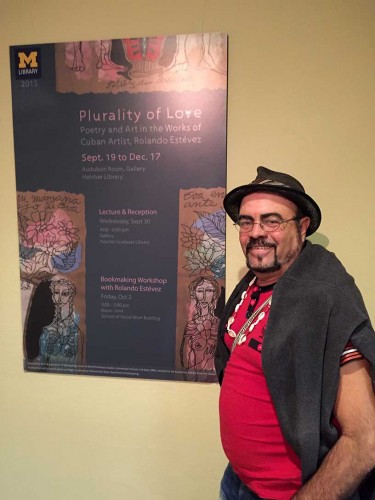
Cuban book artist, Rolando Estévez
What many of us found striking about Estévez’s works and presentation was his use of everyday objects and materials in his book creations, particularly how he worked with butcher paper during the early days of the revolution amid shortages when many other art supplies were not available. It was incredibly moving and meaningful to see how each item – such as the cigarette cartons and leaves, shells and other found objects he incorporated – have significance in the whole, something more than individual materials. Rather than painting an image with words alone, he brings the books to life in amazing colors, textures, and intricate designs that leave one in awe over the layers upon layers revealed by folding paper, building boxes or rolling scrolls.
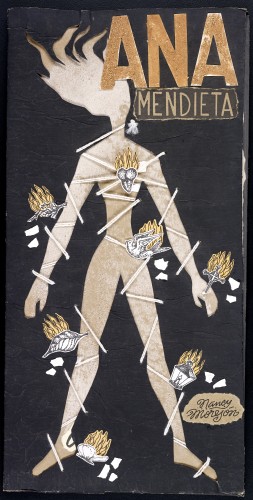
Ana Mendieta by Nancy Morejón.
Designed by Rolando Estévez
Holding in our hands one such work, Ana Mendieta, it felt as if the story were already pouring forth, prior to even opening the delicate book. With cracked egg shells surrounding a cutout of a woman’s body, sewn with rough thread, the cover of this book was just a premise of the tragic story within. Especially moving was the humility of the materials used, and moreover, what the production of these books achieved - the ignition of a sense of community, unity, and hope during some of life’s more challenging moments.
His large work, The Angel and the Sea, struck a chord in many of us. While it may seem simple, as it is just one large, unfurled piece instead of his books with many pages, it explores Hemingway’s life and presence in Cuba in intricate details. In the juxtaposition of the two wings on the piece, one was made of trash, such as Marlboros and Camels cigarettes, and the other was painted in beautiful blue colors. He also included an oar that he found and bought in Cojímar, Cuba, the seaside village where Hemingway spent considerable time when in Cuba and which formed the backdrop for his Pulitzer Prize-winning novel, The Old Man and the Sea.
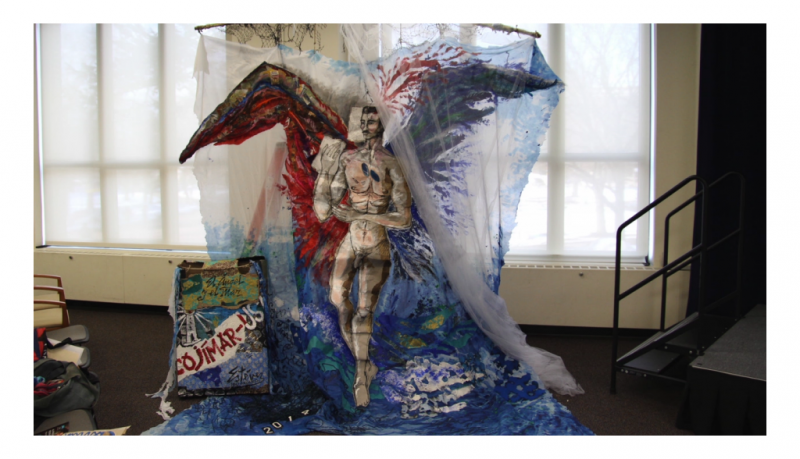
The Angel and the Sea
Original book Art by Rolando Estévez
Estévez’s books are so much more than a literary work or piece of artwork. His books tell the story of how they were made, of all the joint efforts that went into creating them – with lists of the people that contributed to the creation of the book, showing how collaborative the effort is. They hold so much more meaning than the words and objects themselves. Reading about Ediciones Vigía and Rolando Estévez was amazing, but actually getting to touch and hold and interact with the books added a whole new element of emotion and experience. The works challenge the definition of what a book really is and what it can be.
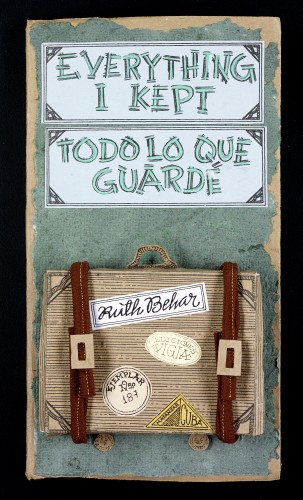
Everything I Kept by Ruth Behar.
Designed by Rolando Estévez
What’s more, the books are personal both to himself and to the author of the written text that he depicts visually. Each piece has a specific style to it that creates an experience of the ideas of the poetry and stories inside as well as the history of the author, such as Cuba’s celebrated poet Nancy Morejón. Another, Everything I Kept, based on Professor Behar’s collection of poems, depicts a three-dimensional cardboard suitcase holding portraits, dried flowers, shells, sand and a paper Star of David, evoking the sense of movement, memory and displacement when uprooted from one’s homeland.
Estévez takes so much time and effort with all of his books and paintings. They are beautiful creations that encourage a strong connection in the viewer with the entire work, leaving us feeling like we can interpret and view them openly. It is truly wonderful how he has done all of this work with his hands. It is unlike anything many of us have ever seen. While a painting relies on image and a book relies on text, Estévez balances both in his own art form. We left class wishing all books could be like his.
Estévez is truly a talented and imaginative artist, and as he jokingly said while rolling and folding up his work when it was over - a professional packer.
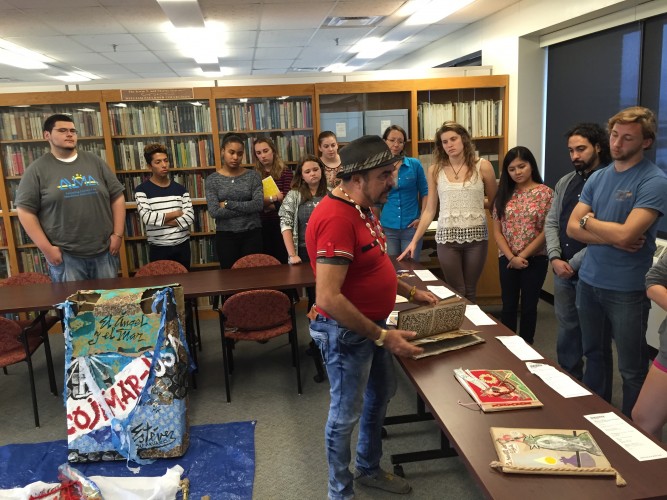
Story by Eric Achterhof, Bailey Binke, Jessica Eisma, Makiya Long, Shelby Meyer, Ilana Rashes, Marissa Wojcik, Abraham Zeiger, and Saundra Amrhein. All photos within this post are by Professor Ruth Behar.